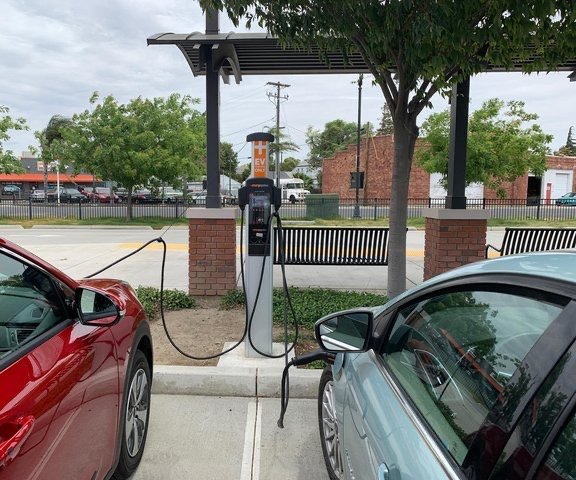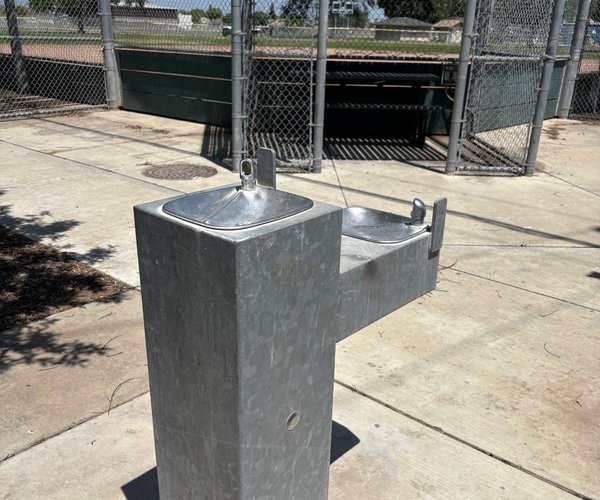Ditch the blue. Toss the red.
Let’s focus on green.
Green as in fresh food.
Lettuce. Apples. Peaches. Grapes. Tomatoes. Walnuts. Strawberries.
I know. Lettuce is green. The others aren’t.
But they all at a point in their growth were dependent on green leaves of some sort whether it is a plant or a tree.
And yes, lettuce is basically leaves.
That said, an abundance of red and blue are the color of ulcers while green is the color of food that keeps you fed.
California — by far the nation’s biggest source of food — produces 11.7 percent of the overall United States agriculture production.
At $51 billion, California leaves the next two closest states — Iowa ($34.9 billion) and Nebraska ($26.5 billion) — in the dust.
The Golden State produces over 400 different commodities.
That includes two thirds of all fruits and nuts plus a third of all vegetables consumed in the United States.
Compared to grain crops, growing vegetables, fruits and even nuts are labor intensive.
It requires farmworkers. Lots of farmworkers.
It is why between a third to a half of this nation’s 500,000 plus farmworkers reside in California
The University of California Merced Community and Labor Center indicates about 75 percent of all California farmworkers are undocumented.
California growers, for years have been facing an increasing dire labor situation created by this country’s dysfunctional immigration policies.
The California Farm Bureau Federation prior to the pandemic indicated more than 50 percent of farmers in the state were unable to find the necessary workers required to produce their main crop in the previous five years.
As a result, roughly 14 percent of farmers reduced their harvests. That in turn reduces the amount of food hitting the market.
Farmers are their own worst enemies in some ways.
The only way they can make more money is produce larger yields.
Only a relatively small portion of the price you pay for food goes into a farmers’ pocket.
The rest is absorbed absorbed by trucking, marketing, processing, packaging, and retail costs.
Farmworkers are harder to come by with each passing year.
A lot of it has to do with our dysfunctional immigration policy.
Then there is “the problem.”
It’s the way we treat farmworkers.
Without them, much of America — and parts of the world that imports agricultural products from our shores — would be eating a lot less.
They were classified as “essential” workers during the pandemic for obvious reasons.
Yet they cannot access federal benefits meant for poorer workers.
Anyone want to guess why we might just have a farm labor shortage that is getting worse with each passing year?
Let’s go down memory lane to 1986.
Then President Ronald Reagan signed the Immigration Reform and Control Act of 1986.
The bill cracked down on the hiring of undocumented immigrants.
But it also allowed immigrants that entered the United States illegally before Jan. 1, 1982 to apply for legal status.
Reagan referred to that provision of the act as “amnesty.”
It allowed around 3 million immigrants to secure legal status after paying $185, demonstrating “good moral character” and learning to speak English.
Guess what? The United States wasn’t plagued with farm labor shortage for years after that.
Congress has tried repeatedly to fix the problem. They were always purple coalitions.
But because most of those bills were amended with solutions addressing various hot button immigration issues opposition to them ran red in some instances — and in other cases ran blue.
Three of the talking points include:
*Allowing terrorists and hardened criminals to enter the country.
*The assumption they are all going to vote lockstep as Democrats if they gain legal citizenship status.
*Those demanding a carte blanche approach to immigration allowing everybody in.
Those points are a bit of nonsense when it comes to three quarters of this nation’s undocumented farmworkers that happen to be in California.
If undocumented farmworkers are a source of terrorist hardened gangs, that isn’t the case in California.
As for voting Democrat it certainly wouldn’t make much of a difference if farmworkers in California did all become Democrats would it?
Those immigrants supposedly looking for a free ride wouldn’t be eager to take an entry option that puts them to work in fields.
What is needed is a way to tackle immigration reform in steps.
That isn’t going to happen in Washington, D.C., given the current climate.
But what if there was a way to demonstrate it could be done right without having everyone hyperventilating about all the reasons it can go wrong.
This is where California State Senator Anna M. Caballero, D-Merced, enters the picture.
She has introduced Senate Bill 831 that will be coming before a committee later this month.
Known as the California Agricultural Worker Permanent Residency Program, it would authorize the Governor to work with the Federal Government to create a working group to establish a pilot program that allows agricultural workers to gain a pathway to Permanent Residency Status.
Caballero points out:
*Farmers and agricultural producers in California are struggling to find a reliable and consistent workforce.
*Undocumented workers are still a primary workforce in agriculture and risk deportation by the Federal Government for not having a work permit or “legal” resident status.
*Undocumented workers exposed to multiple forms of exploitation and unsafe or unsanitary workplace conditions are more reluctant to report that their rights and have been violated because they fear job loss and family separation by deportation.
*Undocumented agricultural workers have no access to the disability benefits and social security benefits that they earn and pay into, or subsidize as part of their work in agriculture.
* During the pandemic, classified as essential workers, they showed up every day to work yet were ineligible to receive unemployment benefits or any other COVID relief granted by the State or Federal Government.
*They kept us fed, but suffered higher rates of infection and death due to COVID.
Under the bill:
*Undocumented farmworkers who have lived in California and worked in agriculture for at least five years would qualify.
*Federal standards for citizenship would apply including a criminal history background check, national security check and fees.
*Application fees for permanent resident status vary but are generally $1,225 for individuals aged 14 to 78.
“Our country experienced a shortage of many things throughout the pandemic, but fresh fruits and vegetables were not one of them,” Caballero said. “If we want to truly show our gratitude, and address the disparities faced by our undocumented workforce, then we need to address the issue at the root of the problem. Creating a pathway to permanent residency status allows our undocumented friends, family and neighbors to come out of the shadows, to live lives free of fear and allow them to qualify for the safety net programs that they deserve and pay into. “
It is time we do right by undocumented farm workers.
And in doing so, we can insure agricultural productivity needed to keep food prices affordable and America fed.
This column is the opinion of editor, Dennis Wyatt, and does not necessarily represent the opinions of The Bulletin or 209 Multimedia. He can be reached at dwyatt@mantecabulletin.com






